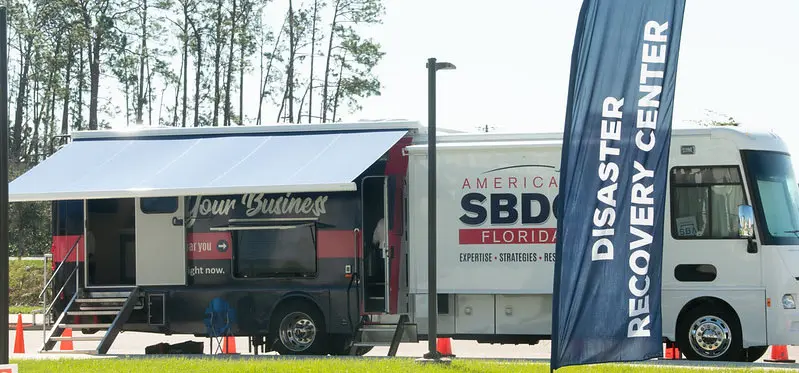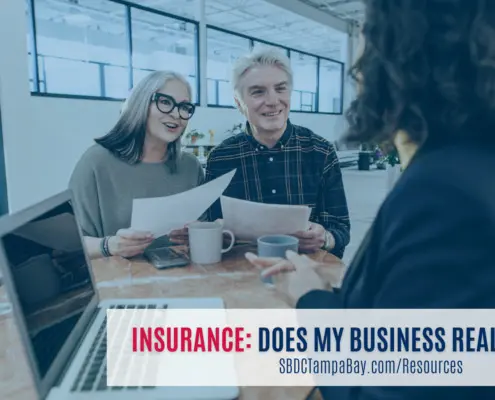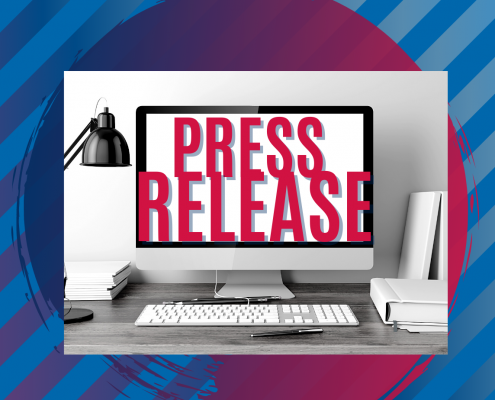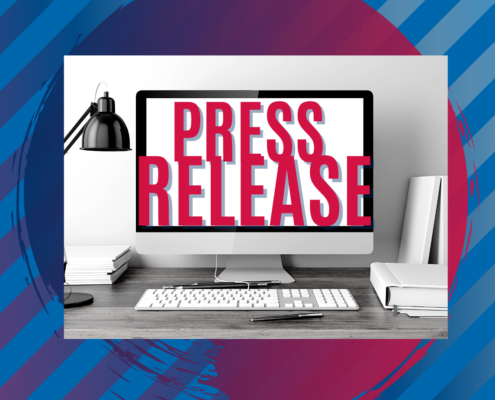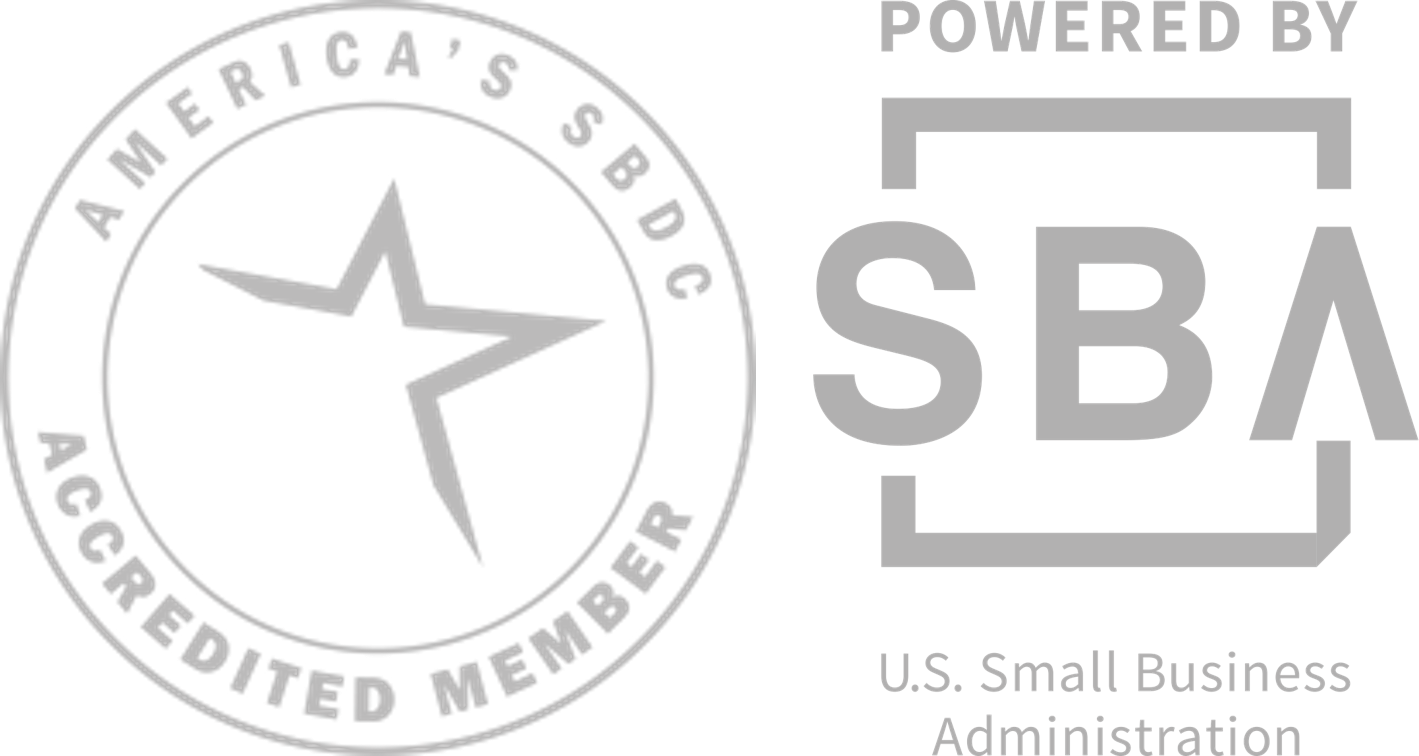Ensuring Tampa Bay area businesses stay open
The State of Florida opened the Business Damage Assessment Survey for Hurricane Ian on Wednesday, Sept. 28. Please take a moment to complete the survey. Completion of the survey by as many business owners as possible helps to ensure the proper services will be available for recovery efforts.
When disaster strikes, businesses in the Tampa Bay region can find the education, training and assistance needed to survive through our Business Continuation Services.
40% of all businesses that close following a disaster never re-open.
Our professionally certified business consultants provide consulting at no cost, and training events to help you minimize losses and increase survivability when affected by natural and man-made disasters.
We can help business owners develop a plan tailored for your business, at no cost.
Active Disaster Declarations
State of Florida Emergency Bridge Loan
Incident: Flooding
Counties: Broward, Collier, Lee, Miami-Dade and Sarasota
Details: The program provides short-term, zero-interest loans to small businesses that experienced economic injury or physical damage due to flooding in South Florida. Eligible small businesses may apply for loans of up to $50,000 through the program. Loans approved through the Emergency Bridge Loan Program are intended to “bridge the gap” between the time a disaster impacts a business and when a business has secured longer term recovery funding, such as federally or commercially available loans, insurance claims, or other resources.
FloridaCommerce administers the Emergency Bridge Loan Program alongside its fiscal administrator, Florida First Capital Finance Corporation. Loans made under this program are short-term, zero-interest, personal loans using State of Florida funds. They are not grants and loans must be repaid by the approved applicant.
Maximum Loan Amount: $50,000
Deadline to Apply: August 12, 2024, until all available funds are expended
How to Apply: Visit FloridaJobs.org/EBL to learn more about the program, view the lending guidelines and required documentation, and complete an application by the August 12, 2024, deadline. Business owners who need further program information may call 833-832-4494 Monday through Friday from 8:00 a.m. to 5:00 p.m., Eastern Time.
SBA Disaster Loans
Drought
Counties: Hillsborough, Manatee, Pinellas and Sarasota; and the contiguous Florida counties of: Charlotte, DeSoto, Hardee, Pasco and Polk
Deadline: November 25, 2024
Assistance Available: Economic Injury Disaster Loan
How to Apply: Applications for disaster loans may be submitted online using the MySBA Loan Portal at https://lending.sba.gov or other locally announced locations. Please contact the SBA’s Customer Service Center by email at disastercustomerservice@sba.gov or by phone at 1-800-659-2955 for further assistance.
October 12 Tornado
Counties: Citrus and the adjacent counties of Hernando, Levy, Marion, and Sumter.
Deadlines: The filing deadline to return applications for physical property damage is December 29, 2023. The deadline to return economic injury applications is July 30, 2024.
How to Apply: Apply online using the Electronic Loan Application (ELA) via SBA’s secure website at sba.gov/disaster and should apply under SBA declaration # 20026.
Types of Disaster Loans
Florida Small Business Bridge Loan Program
When activated by the Governor, the Florida Small Business Bridge Loan Program, administered by the Florida Department of Economic Opportunity in collaboration with Florida First Capital Finance Corporation (FFCFC) and the Florida SBDC Network, provides short-term, interest-free working capital loans intended to help impacted businesses “bridge the gap” between the time a major catastrophe hits and when a business has secured long-term recovery resources, such as insurance claims or federal assistance. Eligible businesses with two to 100 employees may apply for loans up to $50,000 for 90 or 180-day terms. Visit www.FloridaDisasterLoan.org for full details.
U.S. Small Business Administration (SBA)
Business Physical Disaster Loans
Businesses and most private non-profit organizations located in a declared disaster area that incurred damage during a disaster may apply for a low-interest loan to help replace or restore damaged property if federal assistance is activated. SBA makes physical disaster loans of up to $2 million to qualified businesses and most private non-profit organizations. Visit www.SBA.gov for full details.
Loans to businesses to repair or replace disaster-damaged property owned by the business, including real estate, inventories, supplies, machinery and equipment. Businesses of any size are eligible. Private, non-profit organizations such as charities, churches, private universities, etc., are also eligible.
To find active disaster declarations and associated assistance, please visit www.SBA.gov.
U.S. Small Business Administration (SBA)
Economic Injury Disaster Loans (EIDL)
If federal assistance is activated and you are in a declared disaster area, have suffered substantial economic injury regardless of physical damage, and you are a small business, small agricultural cooperative, or private nonprofit organizations, you may qualify for an EIDL. EIDLs provide working capital to help businesses survive until normal operations resume after a disaster. SBA can provide up to a maximum of $2 million to help meet financial obligations and operating expenses. A business may qualify for both an EIDL and a physical disaster loan, not to exceed the maximum of $2 million. Visit www.SBA.gov for full details.
Working capital loans to help small businesses, small agricultural cooperatives, small businesses engaged in aquaculture, and most private, non-profit organizations of all sizes meet their ordinary and necessary financial obligations that cannot be met as a direct result of the disaster. These loans are intended to assist through the disaster recovery period.
To find active disaster declarations and associated assistance, please visit www.SBA.gov.
Two Mobile Assistance Centers (MACs)
The MACs are 38’ RVs outfitted as mobile Florida SBDC Network centers. As a principal responder in the state’s Emergency Support Function (ESF) 18 for Business & Industry, the MACs are deployed during a disaster to provide an on-the-scene workspace for our consultants to assist impacted businesses. When not in use during a time of emergency, the MACs provide services to businesses in rural areas of Florida.
Disaster Assistance App
As part of its service offering, the Florida SBDC offers Bizaster, a free mobile disaster assistance app. Bizaster, available in both English and Spanish for Android and iOS, features risk assessments, customizable checklists, and other resources to help businesses prepare, respond, and recover from natural and man-made disasters. Bizaster can be downloaded from the App Store or via Google Play.
- View a short video about the app.
- View an informational webinar about the app.
Additional Resources
-
www.floridadisaster.biz – Florida Department of Economic Opportunity
- www.flvbeoc.org – Business Damage Assessment Survey
- www.FloridaDisasterLoan.org – Florida Emergency Bridge Loan Application
- www.FloridaDisaster.org – Florida Division of Emergency Management
- www.SBA.gov – Federal Disaster Loans
- www.fema.gov
- www.ready.gov/business
- Get a Plan | Florida Division of Emergency Management
- Hurricane Checklist for Business | PreparednessGuide.org
- Florida Department of Health | COVID-19 Website
- Prepare for Emergencies | U.S. Small Business Administration
- Tax Relief Guidance During Times of Disaster | IRS
- Tampa Business Emergency Council
- Cyberplanner | Federal Communications Commission
- Wildfire Preparedness | U.S. Small Business Administration
- Flood Preparedness | U.S. Small Business Administration
FAQ
Do I have to be physically located in a federally declared disaster area to be considered an “affected taxpayer?"
A taxpayer does not have to be located in a federally declared disaster area to be an “affected taxpayer.” Taxpayers are “affected” if records necessary to meet a filing or payment deadline postponed during the relief period are located in a covered disaster area.
An affected taxpayer can be:
- An individual
- Any business entity or sole proprietor
- Any shareholder in an S Corporation
I own an interest in a partnership, or I am a shareholder in an S Corporation that is located in a federally declared disaster area. However, I do not live in the disaster area myself. I rely on information (Schedule K-1) from the partnership or S Corp to file my tax return. Do I qualify as an affected taxpayer for purposes of receiving filing and payment relief?
Yes. If the affected partnership or S Corp cannot provide you the records necessary to file your return then you’re also an affected taxpayer. Your filing and payment deadlines are postponed until the end of the postponement period just like the affected partnership or S Corp.
To get the postponement for filing or payment, you must:
- Call the Disaster Assistance Hotline at 1-866-562-5227
- Explain that your necessary records are located in a covered disaster area
- Provide the FEMA Disaster Number of the county where the affected partnership or S Corp is located
- See Treas. Reg. § 301.7508A-1 and Rev. Proc. 2007-56 for a list of taxpayer acts that may be postponed in response to a federally declared disaster
What are the non-payment penalties for Emergency Bridge Loans?
View page 2-5 of A Guide to the Disaster Declaration Process
In the event of a disaster declaration, what FEMA assistance is available?
Penalties for non-payment will begin at the expiration of the established term of each loan, and will be as follows:
- 12% per annum on the unpaid balance for the first 180 days following expiration of the established term.
- 18% per annum on the unpaid balance thereafter.
- Default is subject to normal commercial collection process.
What is the interest rate on SBA physical and economic injury loans?
By law, the interest rates depend on whether each applicant has Credit Available Elsewhere. An applicant does not have Credit Available Elsewhere when SBA determines the applicant does not have sufficient funds or other resources, or the ability to borrow from non-government sources, to provide for its own disaster recovery. An applicant, which SBA determines to have the ability to provide for his or her own recovery is deemed to have Credit Available Elsewhere. Interest rates are fixed for the term of the loan. The interest rates applicable for this disaster are:
| No Credit Available Elsewhere | Credit Available Elsewhere | |
|---|---|---|
| Business Loans | 3.305% | 6.610% |
| Non-Profit Organization Loans | 2.500% | 2.500% |
| Economic Injury Loans | 3.305% | N/A |
| Businesses and Small Agricultural Cooperatives | 3.305% | N/A |
| Non-Profit Organizations | 2.500% | N/A |
| Home Loans | 1.750% | 3.500% |
Is there SBA help with funding mitigation improvements?
If your loan application is approved, you may be eligible for additional funds to cover the cost of improvements that will protect your property against future damage. Examples of improvements include retaining walls, seawalls, sump pumps, safe rooms, etc. Mitigation loan money would be in addition to the amount of the approved loan, but may not exceed 20 percent of total amount of physical damage to real property, including leasehold improvements, and personal property as verified by SBA to a maximum of $200,000 for home loans. It is not necessary for the description of improvements and cost estimates to be submitted with the application. SBA approval of the mitigating measures will be required before any loan increase.
Can I use my SBA loan to relocate my business?
You may use your SBA disaster loan to relocate. The amount of the relocation loan depends on whether you relocate voluntarily or involuntarily? If you are interested I relocation, an SBA representative can provide you with more details on your specific situation.
Are there insurance requirements for SBA loans?
To protect each borrower and the Agency, SBA may require you to obtain and maintain appropriate insurance. By law, borrowers whose damaged or collateral property is located in a special flood hazard area must purchase and maintain flood insurance. SBA requires that flood insurance coverage be the lesser of 1) the total of the disaster loan, 2) the insurable value of the property, or 3) the maximum insurance available.
How do I contact the SBA if I have additional questions?
For more information, contact SBA’s Disaster Assistance Customer Service Center by calling (800) 659-2955, emailing disastercustomerservice@sba.gov, or visiting SBA’s Web site at http://www.sba.gov/disaster. Deaf and hard-of-hearing individuals may call (800) 877-8339. Applicants may also apply online using the Electronic Loan Application (ELA) via SBA’s secure Web site at
Is there help available through the SBA for refinancing?
- SBA can refinance all or part of prior mortgages that are evidenced by a recorded lien, when the applicant (1) does not have credit available elsewhere, (2) has suffered substantial uncompensated disaster damage (40 percent or more of the value of the property or 50% or more of the value of the structure), and (3) intends to repair the damage.
- Businesses — Business owners may be eligible for the refinancing of existing mortgages or liens on real estate, machinery and equipment, up to the amount of the loan for the repair or replacement of real estate, machinery, and equipment.
- Homes — Homeowners may be eligible for the refinancing of existing liens or mortgages on homes, up to the amount of the loan for real estate repair or replacement.
What restrictions are there on SBA loan eligibility?
- Uninsured Losses — Only uninsured or otherwise uncompensated disaster losses are eligible. Any insurance proceeds which are required to be applied against outstanding mortgages are not available to fund disaster repairs and do not reduce loan eligibility. However, any insurance proceeds voluntarily applied to any outstanding mortgages do reduce loan eligibility.
- Ineligible Property — Secondary homes, personal pleasure boats, airplanes, recreational vehicles and similar property are not eligible, unless used for business purposes. Property such as antiques and collections are eligible only to the extent of their functional value. Amounts for landscaping, swimming pools, etc., are limited.
- Noncompliance — Applicants who have not complied with the terms of previous SBA loans may not be eligible. This includes borrowers who did not maintain flood and/or hazard insurance on previous SBA loans.Note: Loan applicants should check with agencies / organizations administering any grant or other assistance program under this declaration to determine how an approval of SBA disaster loan might affect their eligibility.
Is there a U.S. SBA Business Recovery Center in my area to assist me?
Business Recover Centers only open when there is an active declaration of emergency.
Is Transitional Sheltering Assistance available?
FEMA is making Transitional Sheltering Assistance (TSA) available to eligible survivors in the state of Florida, who are unable to return to their pre-disaster primary residence because their home is either uninhabitable or inaccessible. TSA provides disaster survivors with a short-term stay in a hotel or motel. Through direct payments to lodging providers, TSA is intended to reduce the number of disaster survivors in shelters by transitioning survivors into short-term accommodations. Eligible survivors can find the list of TSA-approved hotels on www.DisasterAssistance.gov, and click on the Transitional Sheltering Assistance (TSA) Program Participating Hotel List link. If internet access is unavailable, the FEMA Helpline (1-800-621-3362) can assist with locating a participating property. Survivors should contact the hotel directly to secure a hotel room prior to traveling to the hotel. Rental Assistance. Assistance through FEMAs Individual and Households Program may be available to eligible applicants to secure temporary housing while repairs are being made to the pre-disaster primary residence, or while transitioning to permanent housing while applicant survivor is displaced from their primary residence.
Can I get more time to file returns and pay taxes?
Depending on the circumstances, the IRS may grant additional time to file returns and pay taxes.
Is the Bridge Loan a paper check or an electronic funds transfer?
Paper check.
Is the Bridge Loan made payable to the business or the owner?
Since they are personally guaranteed, they are made payable in the owner’s name.
Will my credit report be pulled when I apply for a loan?
Yes.
Do I have to repay the Bridge Loan in one lump sum, or can I make payments?
Either one. The applicant can submit one payment for the whole amount or break it down into smaller payments.
My business was failing before the hurricane. Can I use a Bridge or SBA loan to get out of the hole?
No. Applicant must prove their business was solvent prior to the hurricane.
Can I extend my Bridge Loan beyond 180 days?
If the applicant can’t pay the loan within the 180 days, they can continue with the loan. However, the zero interest period is only for the first 180 days. After that time, interest will start accumulating on the balance owed. This can become a financial problem if the applicant falls in this situation as the interest is comparable to those from credit cards.

